
Sellers that want to improve eCommerce sales should know Amazon listing title best practices, including how to use the right keywords and avoid using too many words.
Amazon is an excellent platform for online retailers because it offers a wide range of products from different categories in one place.
But suppose you are new to this platform or do not have much experience selling on Amazon. In that case, you may be wondering how to improve your Amazon product titles.
This article explains the Amazon listing title best practices that we follow at Emplicit. It also explains why we use Flat File Pro, a listing software for Amazon, to change listing titles for our clients in record time.
Here’s a look at the Amazon listing title best practices and other guidelines we discuss in this article.
What Are Amazon’s Listing Title Best Practices To Follow?
First and foremost, Amazon has particular requirements for the titles of your products. These product listing requirements apply to all products listed on Amazon’s global marketplaces.
Be aware of title guidelines to ensure that your products appear within Amazon search engine results pages.
By understanding Amazon listing best practices before you begin updating your product titles, you’ll be ready for success.
Read on to discover the four criteria that could cause products to be search-suppressed:
Your Title Length Must Meet Character Length Guidelines For Your Product Category
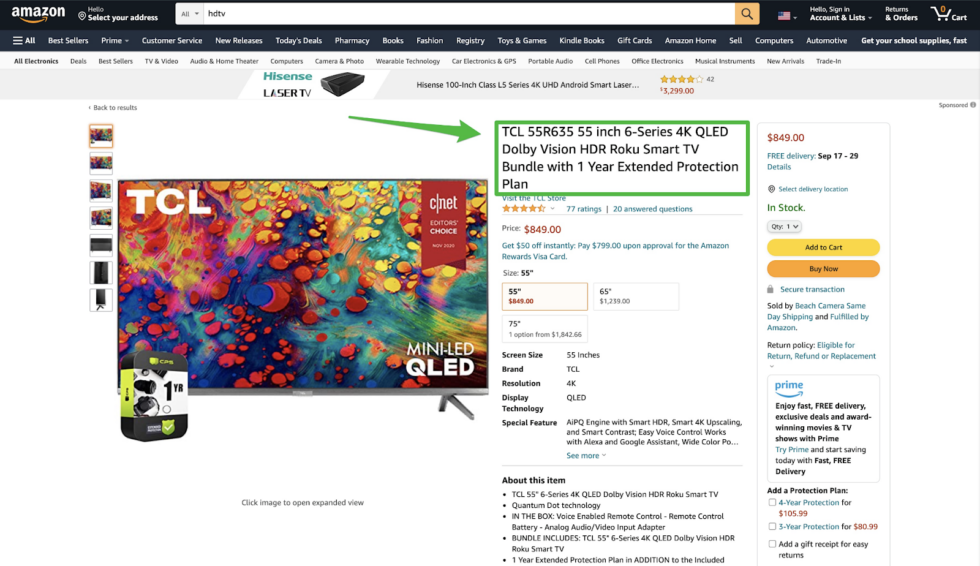
The number of characters permitted within your product title depends on the category under which your product listing falls. Each category allows a designated number of characters, including spaces.
As an Amazon Seller, you must consider these guidelines while including the brand name, product type, and UPC or EAN code. The brand name always goes first, followed by the product type and the barcode number.
If you want to include other keywords in your title, you will have to do so within these constraints.
Titles Must Not Include Promotional Phrases
You may think using promotional phrases in your product listing title will bring more customer traffic. Unfortunately, this is not the case.
Amazon will suppress your product from search results if it detects promotional language in the title.
To avoid this, make sure that all of your titles are factual and informative, and never use phrases such as “free shipping” “Buy One, Get One Free.”
Titles Must Not Include Any Characters For Decoration Purposes
Your product title should never include characters not essential to the title itself. This means no emoji, no special symbols, and no excessive punctuation.
While you may want to add these elements to your listing to make it more eye-catching, they will only serve to clutter up your title and make it less effective.
In fact, if Amazon detects you used characters such as ~ ! * $ ? _ ~ { } # < > | * ; ^ ¬ ¦ unnecessarily, then your product will be omitted from search engine results.
You Must Include Product-Identifying Information In Your Title
When customers search for a product on Amazon, they look for specific items that meet their needs.
To ensure that the right people find your product, you need to include relevant keywords and product information in your title.
Relevant keywords include information about the product size, color, quantity, weight, material, etc.
Suppose you do not include this type of information in your title. Your product will be less likely to show up in search results when potential customers are looking for it.
For example, instead of using only the descriptive word “shoes” in your product listing title, be more specific and write the title as “size 11 Men’s Basketball Shoes”.
By following these guidelines, you can ensure that your product titles are effective and compliant with Amazon’s rules.
Now that we’ve gone over the basics of updating an Amazon product listing title, let’s look at tips that make your titles more effective.
Additional Amazon Title Best Practices For Creating Better Listings
Let us look at how to develop a compelling Amazon product title now that we’ve covered the fundamentals. You should follow these Amazon title best practices to craft an excellent product name:
Amazon Listing Title Best Practices #1: Include Your Brand Name

When creating your product title, always remember to include the brand name first. Adding a brand name in your titles will ensure that customers know which company made the product they are looking for.
Amazon Listing Title Best Practices #2: Include Your Product Type
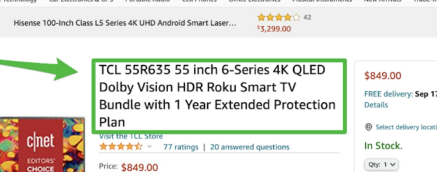
Along with the brand name, it is also essential to list the type of product you’re selling.
Including product details will help potential customers determine if your product is what they are looking for before clicking through to see more information.
Amazon Listing Title Best Practices #3: Use Relevant Keywords
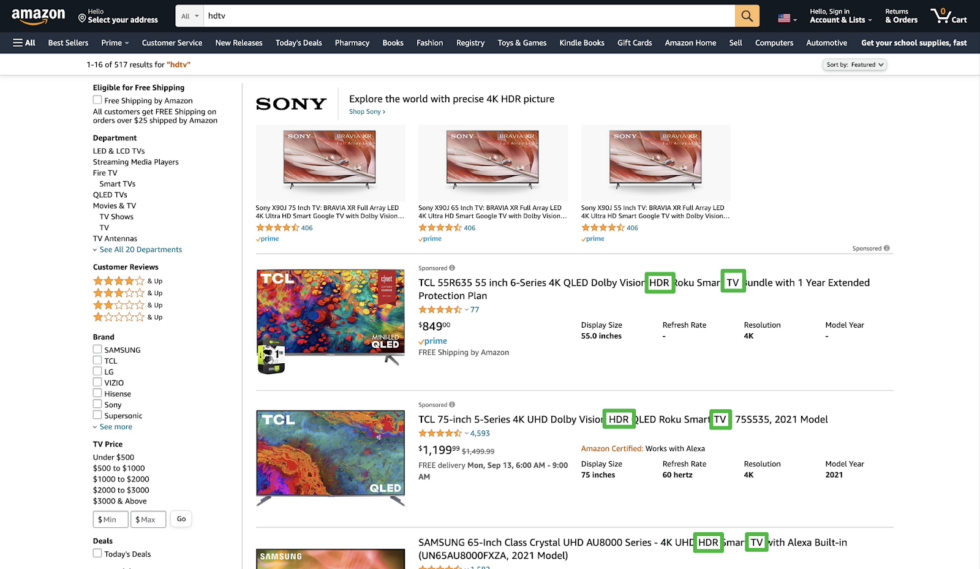
To make sure that your product shows up in Amazon’s search engine results, you must use relevant keywords in your title. These could be specific features of your product or general terms related to the category under which it falls.
You can also use keyword research tools to help you determine which keywords are being used most often by potential customers. After conducting keyword research, include those phrases in your title.
Amazon Listing Title Best Practices #4: Be Concise

Your product title should be concise and to the point. A clear title is clear and free of any unnecessary words or phrases.
The goal is to give potential customers all of the information they need about your product in as few words as possible.
Amazon Listing Title Best Practices #5: Use Capitalization Correctly
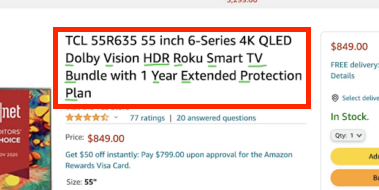
When writing your product titles, be sure to use proper capitalization. This includes using capital letters for the first letter of each word and abbreviations and acronyms.
This will make your titles more readable, but it will also help to ensure that they are compliant with Amazon’s rules.
Let’s dig in a little deeper. Now that we’ve covered some crucial tips for updating your title let’s get into why you should take the time to do so.
More Amazon SEO Product Title Tips
If you’re not already doing so, here are some additional reasons to update your product titles.
Use Title Formulas For Categories
It may seem like a lot of work to develop unique product names every time you create a new item. However, there are times when you can save yourself a great deal of effort by simply taking advantage of Amazon’s built-in formulas.
For example, if you sell bath products, you might want to consider using this formula:
Brand – Product Line – Product Name – Listing Features
This formula would allow you to easily add variations to your listings without thinking of creative ways to describe them.
Learn How To Optimize Titles
Title tags are one of the essential elements of any page, so they must contain the correct information. You want to include relevant keywords in your title so that customers can find your items quickly.
However, while optimizing your title tag, keep these things in mind.
Keep It Short
Make sure that your title is short enough to fit on a single line. People won’t bother reading it if it takes too long to read.
Don’t Include Too Many Words
Avoid including too many words in your title. The fewer words you use, the better off you’ll be.
Avoid Using Abbreviations
While abbreviations are useful for saving space, they don’t always translate well to searches. Instead, avoid using abbreviations unless they’re part of your brand name.
Be Consistent
While it’s tempting to change your title daily, we don’t recommend it. Customers expect consistency, and changing your title frequently could confuse search engines and customers.
Instead, please stick to one format and follow through with it consistently.
Use Keywords That Match The Description
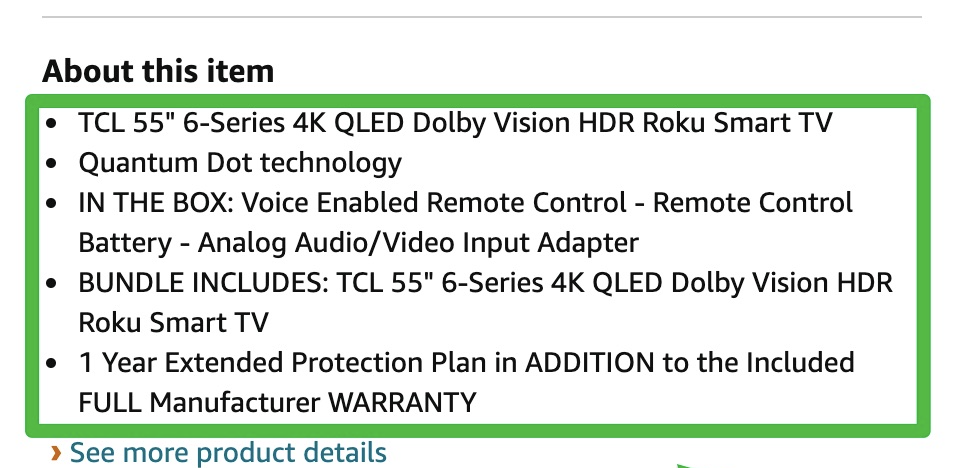
When you use keywords in your product descriptions, you increase your chances of being found by potential buyers.
However, make sure those keywords match the content of your product description. For example, if you sell a digital camera, you wouldn’t want to use the keyword “camera” by itself.
Instead, use the keyword “digital cameras,” or “digital photography camera.”
These long-tail keywords help customers find products that have similar characteristics to yours while targeting less-competitive search terms.
Don’t Use Excessive Words
Amazon wants sellers to focus on providing quality customer service. They don’t want them to waste too much time writing lengthy product titles and descriptions.
If you go over the title limit, you may lose out on sales. You can always add more text later, but you shouldn’t try to fit everything into your first few lines.
Don’t Stuff Keywords
You don’t have to stuff your titles with keywords. Stuffing your titles with keywords could hurt your rankings. Instead, focus on making your titles concise and easy to understand. Keyword stuffing isn’t an effective strategy because it harms Amazon SEO and end-product users.
What Makes A Good Product Title?
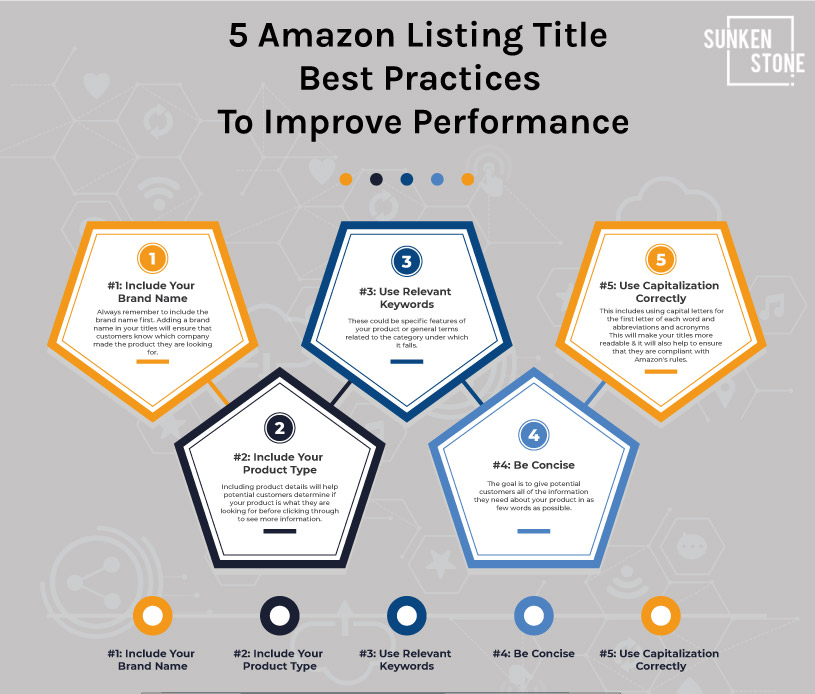
As you can tell, writing listing titles seems like an intimidating task. But once you know what makes a good title, it becomes much easier to write effective ones.
The first thing to consider is whether your product title is too long. If it’s longer than 100 characters, you’ll lose out on search results.
Try to keep your titles between 50 and 75 characters. Also, avoid using punctuation marks like commas and periods. These may appear fine in your head, but they won’t look great on the page.
These suggestions are helpful, but crafting the right title depends on your product category, your brand, and how your competitors name their items.
So how do you go about creating a good title? Let’s look at a few examples in the book category.
Example 1: “The Ultimate Guide To Buying And Selling On eBay”
This title includes a list of features. While it doesn’t contain any keywords, it does have a clear description of the product.
Example 2: “How To Make Money On eBay With These 10 Simple Steps”
This title includes two lists of features. While it also consists of a clear description of the item, it’s missing any keywords.
Example 3: “How To Sell On eBay Without Getting Caught Off Guard By Expensive Seller Fees”
This title includes three lists of features. While the title clearly describes the product, it lacks any keywords.
These were just some examples of how you can create listing titles. There are plenty more options available to you. So take some time to learn which methods work best for you.
Once you’ve mastered the art of crafting listing titles, you’ll be able to attract more traffic to your store.
And when you start getting lots of visitors, you’ll see increased sales.
Make Sure Your Title Contains All Of The Following Elements
Crafting a title requires some creativity. If you aren’t able to come up with something original, take inspiration from other sellers’ titles.
Here are some things other sellers do to optimize their product listing titles:
- Title Length – Titles should be between 50 and 70 characters. Anything longer than that might not show up well on mobile devices.
- Keyword Density – You should aim to have at least one keyword per 20 words.
- Keywords – Make sure your title contains relevant keywords. Use a keyword tool to find relevant phrases.
Why Follow Product Listing Best Practice?
So, why should sellers follow Amazon listing title best practices? Your product titles are one of the most important things you’ll ever write.
That’s because it’s what people see before they click through to read more. It’s also the first impression they get from your listing.
Grow Your Brand Profits
The first thing you should know is that Amazon has a strict policy against misleading titles. If you don’t follow this rule, you could lose out on sales.
Explain Vital Product Features
Your product description should include all the critical features of your product. This includes things like what it does, its advantages, who should use it, and any limitations.
It’s essential to provide this information because if customers don’t know what they’re buying, they won’t want to buy it.
Improve Your Conversion Rate
If you’re having trouble converting traffic into sales, consider improving your conversion rate. That means increasing the number of visitors who convert into buyers.
To improve your conversion rate, you need to create a compelling offer. And one of the best ways to improve product rank and conversion rates is through title search engine optimization.
Fortunately, if you follow these steps, you’ll build a descriptive title. But what should you do when it’s time to change each product listing?
Forget time-consuming processes like uploading flat files to make changes in bulk.
Instead, make a bigger impact by switching to Flat File Pro. It’s a listing software for Amazon that helps you improve listing content and titles with ease.
How Do We Update Our Listings Using Flat File Pro To Follow Amazon Listing Title Best Practices?
Flat File Pro makes it easy to create, edit, and restore your product listings. You can even export your data directly to Amazon Seller Central.
Instead of uploading inventory files, dealing with flat file errors, or manually updating product listings one by one, use Flat File Pro instead. It’s fast, simple, and affordable. Plus, it gives you access to an Amazon support team whenever you need it.
There are many different ways to craft compelling product titles. But there are specific rules that make sense regardless of whether you’re selling books, electronics, clothing, or anything else.
Follow these guidelines, and you’ll be able to craft great product titles that lead to more sales. And when it’s time to update your titles, use a listing software for Amazon—Flat File Pro.

